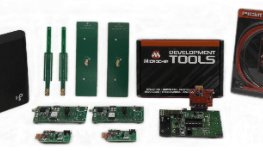Batteryless RF-powered wireless sensor system targets building automation
on

Powercast Corporation has unveiled its Lifetime Power Wireless Sensor System for wireless environmental monitoring in HVAC control and building automation systems, which uses RF energy broadcast by remote units to power wireless sensor nodes without batteries or wires.
The Powercast system consists of three parts: a family of batteryless sensor nodes with embedded Powerharvester receivers for wireless power, a WSG-101 building automation system (BAS) gateway, and a TX91501 Powercaster transmitter. The first member of the family of sensor devices is the WSN-1001 wireless temperature and humidity sensor. Additional sensors for measuring measure CO2, pressure, light level, motion and other conditions will follow shortly.
A single Powercaster transmitter or a network of transmitters operating at 915 MHz (a frequency commonly used in industrial and consumer devices) powers multiple sensor devices in the system. Powerharvester receivers embedded in the sensor nodes receive RF energy up to 15 to 25 metres away from the Powercaster transmitters. The receivers convert the RF energy into DC power for the sensors, similar to RFID devices but with greater range and higher functionality. The RF energy can reach and power sensors even through walls, above ceilings, and behind objects, and it provides a reliable and predictable energy source, unlike pure ambient energy harvesting technologies such as indoor solar, thermal or vibration.
The WSG-101 BAS gateway can handle up to 100 sensor nodes and 800 sensor points for large-scale deployment. The gateway interfaces to wired BAS networks via industry-standard protocols, including BACnet, Modbus, Metasys, and LonWorks. The sensors and gateway communicate wirelessly at 2.4 GHz using 802.15.4 radios, which users can set to channels that will not interfere with or suffer interference from Wi-Fi networks.
Evaluation boards and complete evaluation kits are available.
Image: Powercast


Discussion (0 comments)